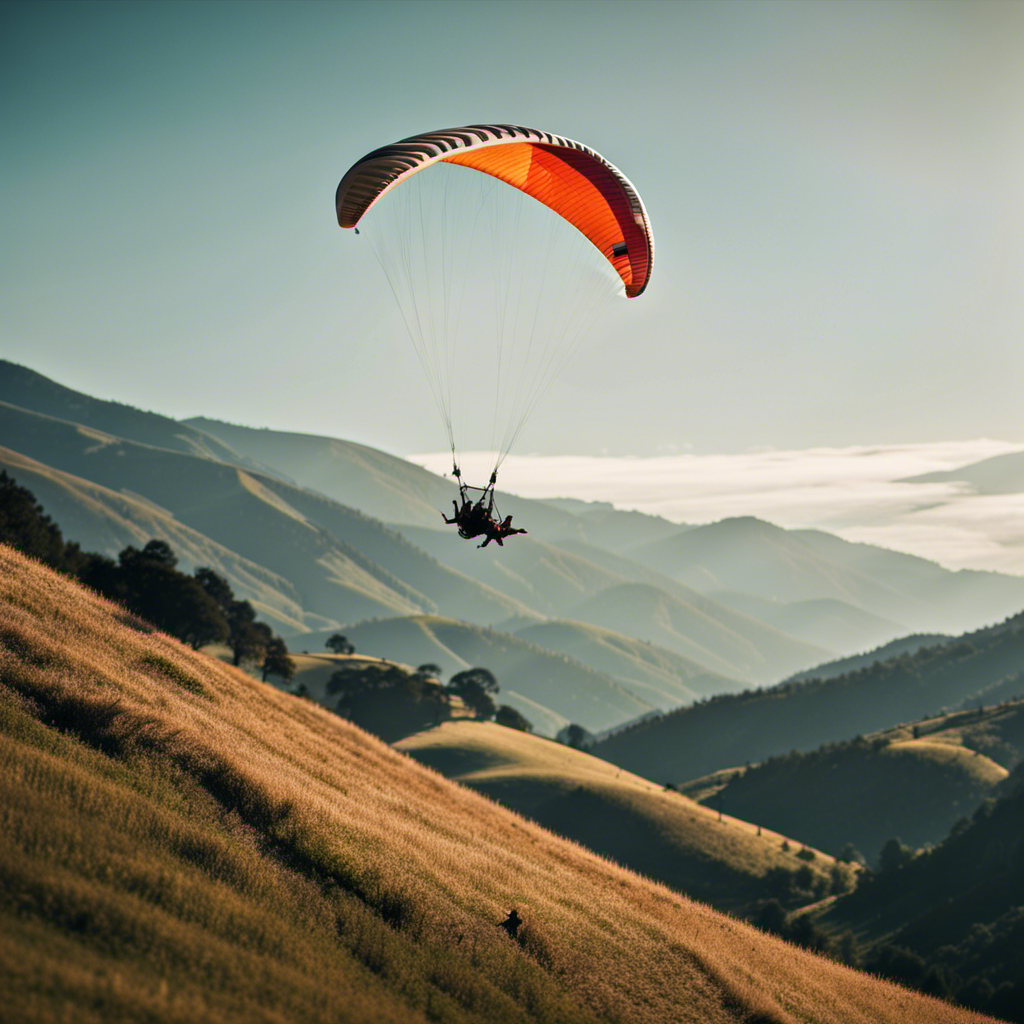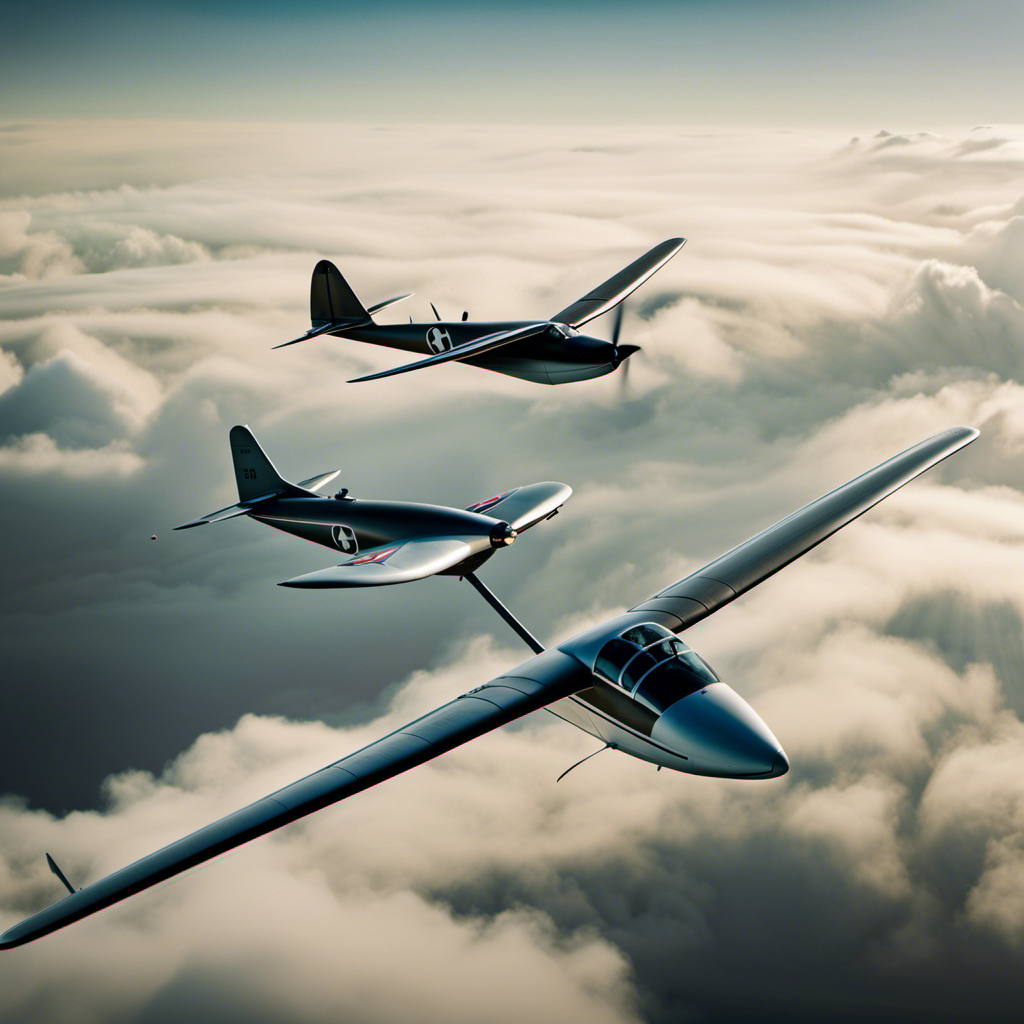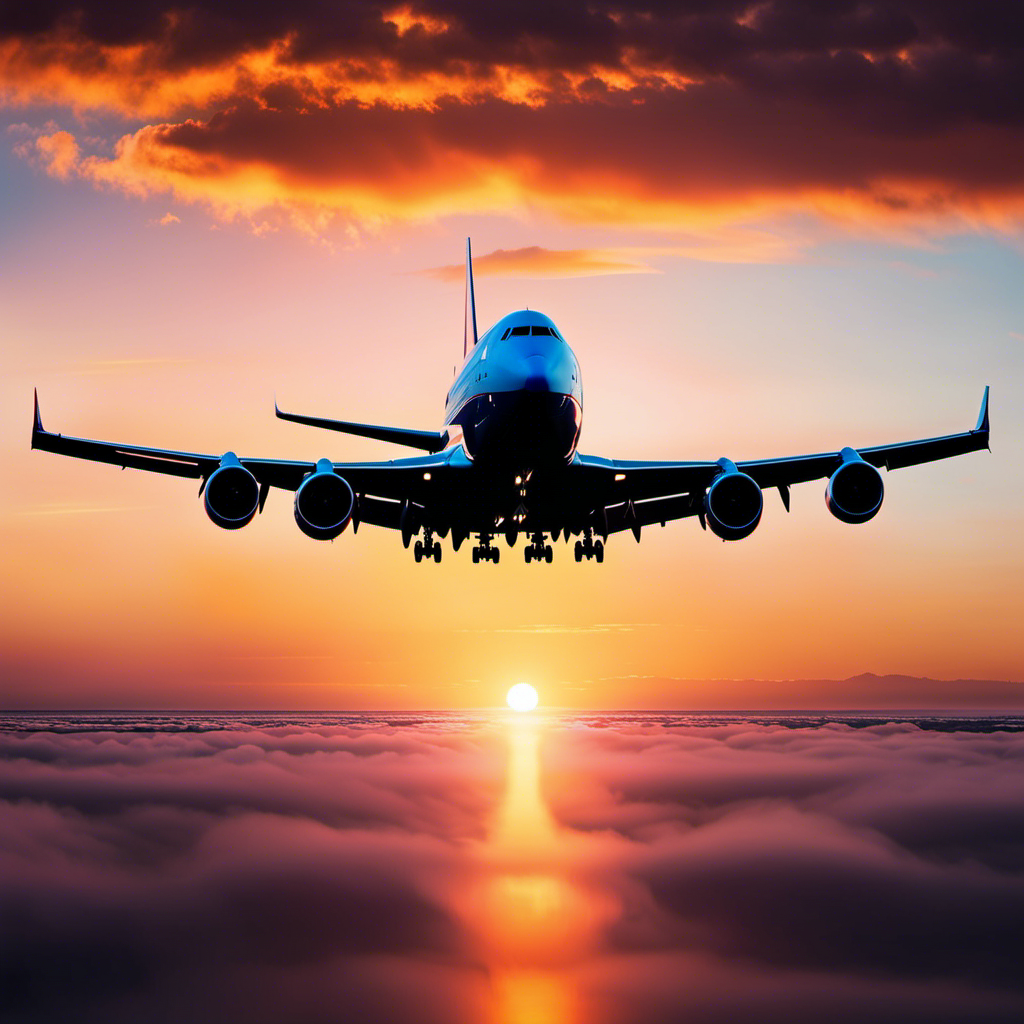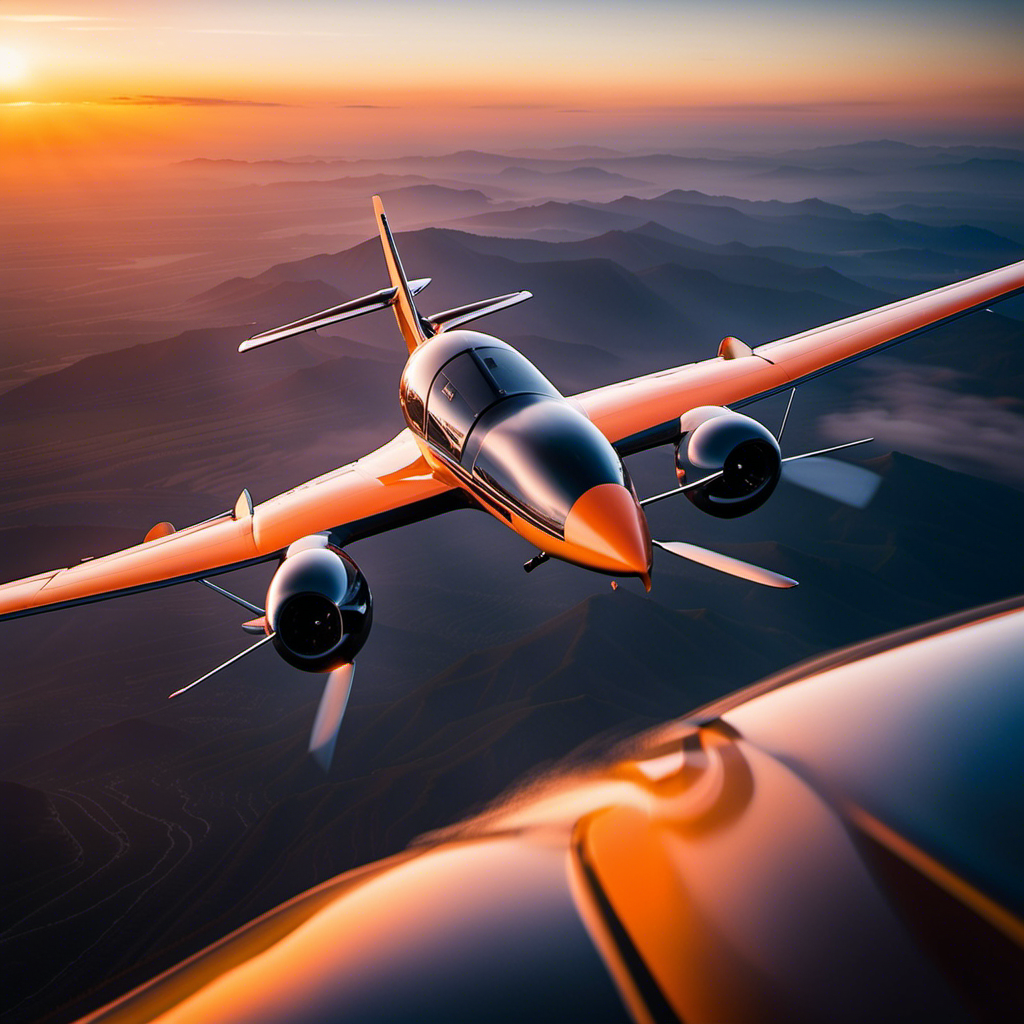As a lover of adventure, the thrill of soaring through the sky has always fascinated me.
Did you know that paragliding and hang gliding are two popular aerial sports that offer a taste of freedom and adrenaline?
In this article, we will explore the history, equipment, flight experience, safety considerations, cost, and more, to help you decide between paragliding and hang gliding.
So, come along as we delve into the world of these exhilarating sports and find out which one is the perfect fit for your next adventure.
Key Takeaways
- Paragliding and hang gliding both have roots dating back to the 1970s, with paragliding originating from the development of the parachute and hang gliding tracing back to the Wright brothers and their experiments with glider flight.
- Paragliding gear is more portable compared to hang gliding equipment, which is bulkier.
- Paragliding involves a running launch technique, while hang gliding can be done through foot launching or tow launching.
- Hang gliding offers a unique flight experience with more maneuverability and aerobatic maneuvers, while paragliding is generally considered safer with slower flying speeds and softer landings.
History and Origins of Paragliding and Hang Gliding
If you’re interested in the history and origins of paragliding and hang gliding, you’ll be fascinated to know that both sports have roots dating back to the 1970s.
The history of paragliding can be traced back to the development of the parachute in the 1960s. Pilots began experimenting with modified parachutes, leading to the creation of the paraglider.
On the other hand, the origins of hang gliding can be traced back to the Wright brothers and their initial experiments with glider flight in the early 1900s. Hang gliding as a recreational sport gained popularity in the 1970s, with advancements in materials and design.
As we delve into the equipment and gear used in paragliding and hang gliding, it is important to understand the rich history and origins behind these exhilarating sports.
Equipment and Gear
The equipment and gear for each sport differ significantly, so it’s important to consider your preferences and needs before making a decision.
In paragliding, you’ll need a paragliding wing, which consists of an inflatable wing made of nylon fabric. It also includes a harness that attaches you securely to the wing. Additional gear includes a reserve parachute, helmet, and radio communication system.
On the other hand, hang gliding requires a hang glider, which is a rigid wing made of aluminum or carbon fiber. You’ll also need a harness, helmet, and reserve parachute. The main difference between the two is that paragliding gear is more portable and easier to transport, while hang gliding equipment is bulkier and requires more space.
Now that you understand the equipment and gear, let’s move on to the launch and takeoff techniques.
Launch and Takeoff Techniques
When it comes to launch and takeoff techniques in paragliding, one common method is the running launch. This involves running forward while the glider inflates and lifts you off the ground.
On the other hand, in hang gliding, there are two main types of launches: foot launching and tow launching. Foot launching requires running down a slope or hill to gain enough speed for takeoff, while tow launching involves being towed by a vehicle or winch to achieve the necessary speed for lift-off.
Both methods have their own advantages and considerations to keep in mind.
Running launches in paragliding
To improve your running launches in paragliding, remember to maintain a steady pace and keep your body position balanced. Here are some tips for a successful running launch:
-
Run with purpose: As you start your run, build up speed gradually and maintain a steady pace. Avoid sudden accelerations or decelerations that could affect your balance.
-
Use your arms: Engage your arms in the running motion to help generate lift and maintain stability. Keep them relaxed and slightly bent at the elbows.
-
Ground handling: Before attempting a running launch, take the time to practice ground handling. This will help you familiarize yourself with the glider’s behavior and improve your overall control.
-
Stay focused: As you run, keep your eyes on the horizon and maintain a forward gaze. This will help you maintain your direction and avoid any obstacles.
By following these guidelines, you’ll be able to perform smooth and controlled running launches in paragliding.
Now let’s dive into the next section, where we’ll explore the differences between foot launching and tow launching in hang gliding.
Foot launching vs. tow launching in hang gliding
Ready to take your hang gliding to the next level? Let’s compare foot launching and tow launching so you can decide which method suits you best.
Foot launching is the traditional way of getting airborne in hang gliding. It involves running down a slope or hill while strapped into the glider, using your legs to generate lift. This method requires physical strength and good coordination to achieve a successful launch.
On the other hand, tow launching involves being towed into the air by a powered aircraft. This method allows for a more controlled and precise takeoff, as you are lifted into the air gradually. It requires less physical effort but may require more skill to master.
Both methods have their advantages and drawbacks, and the choice ultimately depends on your preferences and abilities.
Now, let’s explore the different aspects of flight experience and maneuverability in hang gliding.
Flight Experience and Maneuverability
If you’re looking for more maneuverability in the air, hang gliding might be the better choice for you. Hang gliding offers a unique flight experience that allows you to feel more connected to the elements.
With just a harness and a wing-like structure, you can glide through the air effortlessly, experiencing the freedom of flight like a bird. The maneuverability of hang gliders is unmatched, as they can make sharp turns and perform aerobatic maneuvers with ease.
Whether you want to soar through the sky or challenge yourself with acrobatics, hang gliding provides an exhilarating flight experience. However, it’s essential to consider the safety considerations when participating in this thrilling sport.
Safety Considerations
When hang gliding, be sure to familiarize yourself with the safety considerations to ensure a smooth and secure flight experience. Safety training is crucial before taking to the skies, as it teaches you essential skills and techniques to handle potential risks.
This training includes understanding weather conditions, proper equipment usage, and emergency procedures. Before each flight, a thorough risk assessment should be conducted to evaluate any potential hazards and determine whether it is safe to fly. This assessment involves analyzing factors such as wind speed, visibility, and terrain conditions.
By undergoing safety training and conducting risk assessments, you can mitigate the chances of accidents and ensure a safer hang gliding experience.
Now, let’s explore the accessibility and learning curve of both paragliding and hang gliding.
Accessibility and Learning Curve
To learn more about the accessibility and learning curve of both paragliding and hang gliding, you’ll find that they offer unique experiences for those seeking adventure in the sky. Here are some key points to consider when comparing the accessibility challenges and learning curve of these two sports:
-
Accessibility challenges:
- Paragliding is generally more accessible than hang gliding due to its lighter equipment and easier launching process.
- Paragliders can be packed into a backpack and carried to various launch sites, while hang gliders require specific infrastructure for takeoff and landing.
-
Learning curve:
- Hang gliding has a steeper learning curve compared to paragliding.
- Mastering the hang glider’s weight shift and control bar techniques requires more time and practice.
- Paragliding, on the other hand, can be learned relatively quickly, with beginners able to fly solo after a few days of training.
-
Skill development:
- Hang gliding offers a more dynamic and hands-on flying experience, requiring pilots to actively control the glider using their body movements.
- Paragliding focuses more on understanding weather conditions and using thermal currents for longer flights.
-
Safety considerations:
- Both sports have their own safety considerations, but paragliding is generally considered safer due to its slower flying speeds and softer landings.
- Hang gliding requires more precise piloting skills and carries a slightly higher risk of accidents.
When considering the accessibility and learning curve of paragliding and hang gliding, it’s important to weigh these factors based on your personal preferences and abilities.
Now let’s delve into the cost and maintenance aspects of these two exhilarating sports.
Cost and Maintenance
When considering the cost and maintenance aspects of paragliding versus hang gliding, it’s important to note that paragliding generally has lower initial costs and requires easier maintenance compared to hang gliding.
With paragliding, the initial investment is relatively affordable as it mainly involves purchasing a paraglider wing and a harness. Additionally, the maintenance requirements for paragliding are minimal, usually involving regular inspections and occasional repairs.
On the other hand, hang gliding typically requires a higher upfront investment for a hang glider and a harness, and the maintenance can be more complex and time-consuming. This includes regular inspections, repairs, and replacements of various components.
Paragliding’s lower initial costs and easier maintenance
Paragliding’s lower initial costs and easier maintenance make it a more accessible option for many adventure enthusiasts. When considering the financial aspect, paragliding proves to be a more budget-friendly choice. Here are some factors that contribute to its affordability:
- Equipment: Paragliding requires less expensive equipment compared to hang gliding.
- Training: Paragliding courses tend to be more affordable and accessible.
- Portability: Paragliders are lightweight and easy to transport, reducing the need for additional expenses.
- Maintenance: Paragliders have simpler maintenance requirements, reducing long-term costs.
- Accessibility: Paragliding sites are more abundant, making it easier to find suitable locations without extensive travel.
With these advantages in mind, it’s clear why paragliding is a popular option for those seeking adventure.
However, it’s important to note that hang gliding has its own unique benefits, despite higher upfront investment and maintenance requirements.
Hang gliding’s higher upfront investment and maintenance requirements
Hang gliding requires a greater initial investment and more maintenance than paragliding. When considering the cost comparison, it’s important to take into account the equipment and training required for both activities.
Hang gliding typically involves purchasing a hang glider, which can range from $2,000 to $10,000, along with a harness and other necessary gear. On the other hand, paragliding equipment tends to be less expensive, with prices ranging from $1,500 to $5,000.
Additionally, hang gliders require more maintenance due to their rigid frame structure, while paragliders are generally easier to maintain. It’s important to factor in these costs and maintenance requirements when deciding between the two.
However, the investment in hang gliding can be worth it for those seeking thrilling experiences and breathtaking scenic views.
Scenic Views and Aerial Perspectives
When it comes to experiencing breathtaking views and the sensation of flying through the air, both paragliding and hang gliding offer unique advantages.
Paragliding provides enthusiasts with the opportunity to enjoy panoramic views while soaring gracefully like a bird, allowing for a truly immersive and awe-inspiring experience.
On the other hand, hang gliding offers unobstructed views and a thrilling sensation of flying, as the pilot is suspended beneath a sturdy wing, feeling the rush of wind against their face.
Whether you prefer the freedom of soaring like a bird or the exhilaration of flying through the open air, both paragliding and hang gliding offer unforgettable adventures.
Paragliding’s panoramic views and ability to soar like a bird
With its panoramic views and the ability to soar like a bird, paragliding offers an exhilarating experience. As I glide through the air, I can’t help but feel a rush of adrenaline. The bird’s eye view from up above is simply breathtaking.
Here are some reasons why paragliding provides an unmatched experience:
-
Freedom to explore: Paragliding allows me to navigate through the skies, catching the wind currents and exploring the landscape from a unique perspective.
-
Sense of serenity: Despite the adrenaline rush, there is a certain tranquility in paragliding. The peacefulness of the surroundings and the feeling of being one with nature is truly remarkable.
Transitioning into hang gliding’s unobstructed views and thrilling sensation of flying, I can’t help but imagine the unbounded excitement and awe that awaits.
Hang gliding’s unobstructed views and thrilling sensation of flying
Transitioning into hang gliding, I can’t wait to experience the unobstructed views and thrilling sensation of flying. Hang gliding offers a unique perspective, allowing me to soar through the sky with nothing but the wind beneath me. Unlike paragliding, which relies on a parachute-like wing, hang gliders have a rigid frame that provides stability and control. To further compare the two sports, let’s take a look at the table below:
| Hang Gliding | Paragliding |
|---|---|
| Adrenaline Rush | Tranquility |
| Unobstructed Views | Panoramic Views |
| Thrilling | Serene |
| Requires Training | Beginner-friendly |
As you can see, hang gliding offers an adrenaline rush and unobstructed views, while paragliding provides tranquility and panoramic views. Hang gliding is a thrilling experience that requires training, making it more suitable for adrenaline seekers. Now, let’s explore the community and social aspects of these sports, where enthusiasts come together to share their experiences and passion.
Community and Social Aspects
When it comes to community and social aspects, paragliding has gained tremendous popularity worldwide, boasting a vibrant and diverse global community. Whether you’re in Europe, Asia, or South America, you’re bound to find fellow paragliders who are passionate about the sport and eager to share their experiences.
On the other hand, hang gliding fosters a close-knit community characterized by strong camaraderie. The smaller and more specialized nature of hang gliding creates a sense of unity among its practitioners, leading to lifelong friendships and a supportive network.
Paragliding’s popularity and vibrant global community
If you’re looking for a vibrant global community and a sport that’s gaining popularity, paragliding might be the perfect choice for you. With its increasing popularity, paragliding has attracted a diverse and passionate community of enthusiasts from all over the world. Here are some reasons why paragliding has become so popular and why its community is so vibrant:
-
Paragliding competitions: Paragliding competitions are held regularly, allowing pilots to showcase their skills and compete against each other in a thrilling and adrenaline-fueled environment.
-
Hang gliding festivals: Paragliding enthusiasts often gather at hang gliding festivals, where they can meet like-minded individuals, share experiences, and learn from each other.
-
Global reach: Paragliding is practiced in various countries around the world, making it a truly global community that offers opportunities for international connections and friendships.
-
Online forums and communities: There are numerous online forums and communities dedicated to paragliding, providing a platform for pilots to share tips, experiences, and build connections.
Transitioning into the subsequent section about hang gliding’s close-knit community and camaraderie, hang gliding also offers a strong sense of community and camaraderie among its enthusiasts.
Hang gliding’s close-knit community and camaraderie
Hang gliding offers a tight-knit community where enthusiasts can build strong bonds and share a sense of camaraderie. The close-knit friendships that develop within this community are a result of the shared experiences and adventures that hang gliding offers.
When you take to the skies, battling the wind currents and soaring through the air, you become part of a special group of individuals who understand the thrill and freedom that hang gliding brings. The shared experiences of overcoming challenges, exploring new landscapes, and pushing the limits of human flight create a unique bond among hang gliders.
This sense of camaraderie is truly special and adds an extra dimension to the sport. When considering whether to choose paragliding or hang gliding, personal preference and adventure goals play a crucial role.
Personal Preference and Adventure Goals
Choosing between paragliding and hang gliding ultimately comes down to personal preference and your adventure goals.
Both activities offer unique experiences and have their own set of advantages and risks. When considering your adventure preferences, think about whether you prefer a more relaxed and peaceful flight experience (paragliding) or a more exhilarating and adrenaline-filled one (hang gliding).
Additionally, consider your risk tolerance. Hang gliding typically involves higher speeds and greater maneuverability, which may appeal to thrill-seekers who are comfortable with a higher level of risk. On the other hand, paragliding offers a slower and more gentle flight, which may be more suitable for those who prefer a more serene and laid-back experience.
Ultimately, it’s important to weigh these factors and choose the activity that aligns with your preferences and comfort level.
Frequently Asked Questions
Are paragliding and hang gliding considered extreme sports?
Yes, both paragliding and hang gliding are considered extreme sports. Safety precautions include proper training, checking weather conditions, and using appropriate gear. Differences in equipment and techniques exist, making each sport unique and thrilling.
Can you participate in paragliding or hang gliding if you have a fear of heights?
Participating in paragliding or hang gliding with a fear of heights? Is it possible? Overcoming the fear of heights in these sports may seem daunting, but with proper training, gradual exposure, and mental preparation, it can be conquered.
Are there any age restrictions for paragliding or hang gliding?
There are age restrictions for paragliding and hang gliding. The minimum age for paragliding varies by country, but it is typically around 16-18 years old. Hang gliding also has age restrictions, usually around 14-16 years old. Paragliding can be enjoyed as a competitive sport, while hang gliding is more commonly seen as a recreational activity.
How long does it typically take to become proficient in paragliding or hang gliding?
Becoming proficient in paragliding or hang gliding can take a considerable amount of time. Factors such as weather conditions, training, and personal skill level all play a role. It’s important to weigh the pros and cons before making a decision.
Can you participate in paragliding or hang gliding if you have a physical disability or limited mobility?
Yes, individuals with physical disabilities or limited mobility can participate in paragliding or hang gliding. There are accessible options available that cater to their specific needs, allowing them to enjoy these thrilling activities.
Conclusion
After considering the history, equipment, flight experience, safety, cost, scenery, community, and personal preference, it is clear that both paragliding and hang gliding offer unique and thrilling experiences. However, the question remains: which one should you choose?
The answer lies in the suspense of your own adventure. Embrace the unknown, step out of your comfort zone, and let the wind guide you towards the exhilarating world of paragliding or hang gliding. Whether you choose to soar through the skies or glide with the wind, the choice is yours to make.
With a heart that soars as high as the skies, Aria, affectionately known as “Skylark,” is the driving force behind Soaring Skyways. Her journey into the gliding world began as a young dreamer gazing up at the soaring birds, yearning to experience the weightlessness and freedom they embodied. With years of experience both in the cockpit and behind the scenes, Aria’s commitment to the gliding community is unwavering.










